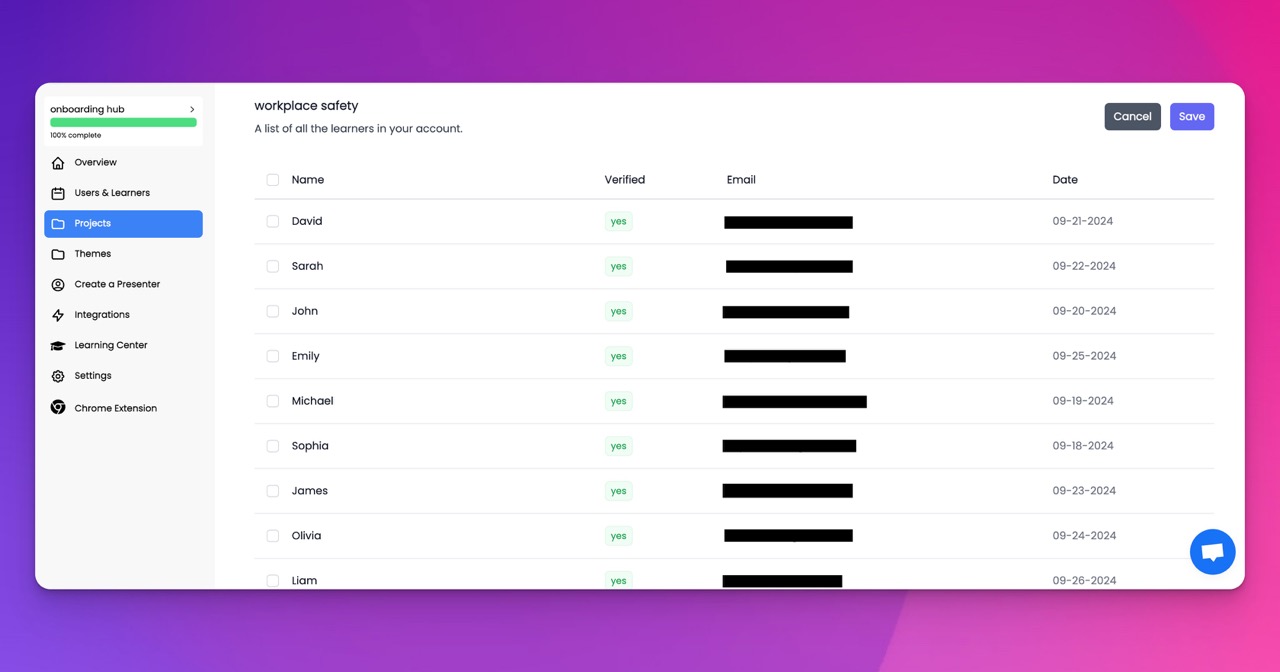🎉 Trainday now integrates with Zendesk and Hubspot 🎉 Trainday now integrates with Zendesk and Hubspot 🎉 Trainday now integrates with Zendesk and Hubspot
🎉 Trainday now integrates with Zendesk and Hubspot
🎉 Trainday now integrates with Zendesk and Hubspot
Contact
From Quick Lessons to Long-Term Gains - The Value of Microlearning in Employee Training
In a world where time is a scarce resource, businesses are searching for ways to train employees efficiently without sacrificing quality. Traditional training methods, while comprehensive, often struggle to keep up with the fast pace of modern industries. Enter microlearning: a revolutionary approach that transforms employee training by delivering quick, focused lessons that yield lasting benefits.
Let’s explore how microlearning bridges the gap between short-term efficiency and long-term impact, making it a game-changer for employee development.
What is Microlearning?
Microlearning delivers training in small, easily digestible units, focusing on specific skills or knowledge areas. Each session typically lasts 3 to 10 minutes and is designed for maximum retention and applicability. Delivered through videos, quizzes, infographics, or interactive modules, microlearning aligns seamlessly with the busy schedules of today’s workforce.
Rather than overwhelming employees with information, microlearning empowers them with targeted lessons they can absorb and apply immediately.
The Long-Term Value of Microlearning in Employee Training
1. Reinforces Knowledge Retention
Microlearning’s short, focused format taps into how the brain naturally learns and retains information. By breaking down complex topics into manageable chunks, it helps employees better understand and recall key concepts. Coupled with spaced repetition—where content is revisited over time—microlearning ensures that lessons stick.
For example, an employee trained in workplace safety through microlearning modules will not only grasp the protocols quickly but also retain them for the long haul, reducing the risk of accidents.
2. Encourages Continuous Learning
Traditional training often takes a "one-and-done" approach, which can leave employees stagnant as industries evolve. Microlearning, on the other hand, fosters a culture of continuous learning. Employees can regularly engage with new content, keeping their skills sharp and up-to-date.
This adaptability is particularly valuable in industries like technology, healthcare, or finance, where staying current is critical to success.
3. Boosts Employee Confidence and Performance
By delivering lessons tailored to specific roles and challenges, microlearning enables employees to gain the skills they need to excel in their jobs. Whether it’s mastering a software tool, improving communication, or learning new safety procedures, the immediate applicability of microlearning builds confidence and enhances performance.
Confident employees are more likely to take initiative, collaborate effectively, and contribute to the company’s goals.
4. Supports On-the-Job Learning
One of the biggest advantages of microlearning is its "just-in-time" nature. Employees can access training modules whenever they face a challenge, allowing them to learn and solve problems in real-time. This practicality not only improves individual productivity but also enhances overall team performance.
Imagine a sales associate accessing a quick lesson on objection handling moments before a client call. With microlearning, they’re better equipped to close the deal.
5. Reduces Training Costs
Developing and delivering microlearning content is often more cost-effective than traditional training programs. Because modules are short and focused, they’re easier to create, update, and distribute. Organizations can deliver high-quality training without the logistical challenges of in-person sessions or the expense of extensive eLearning courses.
Microlearning platforms like Trainday further streamline the process, transforming existing resources such as PDFs or presentations into engaging microlearning content.
6. Drives Long-Term Organizational Growth
The cumulative effect of consistent, impactful training is a more skilled and adaptable workforce. Microlearning equips employees with the tools they need to succeed not just in their current roles but in future opportunities as well. As employees grow, so does the organization, benefiting from improved productivity, innovation, and retention.
Companies that invest in microlearning are better positioned to weather industry changes and maintain a competitive edge.
Microlearning in Action: Real-Life Scenarios
Onboarding New Hires: Welcome employees with role-specific micro-modules that help them hit the ground running.
Compliance Training: Deliver short, focused lessons on regulatory requirements to ensure ongoing compliance.
Upskilling and Reskilling: Provide targeted training to prepare employees for new roles or responsibilities.
Soft Skills Development: Enhance communication, teamwork, and leadership skills with engaging, scenario-based modules.
Best Practices for Implementing Microlearning
Start with Specific Goals Identify the skills or knowledge areas your employees need to improve, and design modules around these objectives.
Leverage Technology Use tools like Trainday to create and distribute microlearning content efficiently. These platforms offer analytics to measure progress and impact.
Prioritize Engagement Incorporate multimedia elements such as videos, animations, and interactive quizzes to keep learners interested and motivated.
Make It Accessible Ensure that training modules are mobile-friendly, enabling employees to learn on the go.
Monitor and Optimize Collect feedback and track learning outcomes to refine your microlearning strategy for maximum impact.
Accelerate Compliance.
Deliver OSHA-Ready Courses Instantly.
Empower your team with data-driven training solutions tailored to your industry's safety standards. Stay compliant, reduce risks, and boost productivity with AI-powered course creation.
